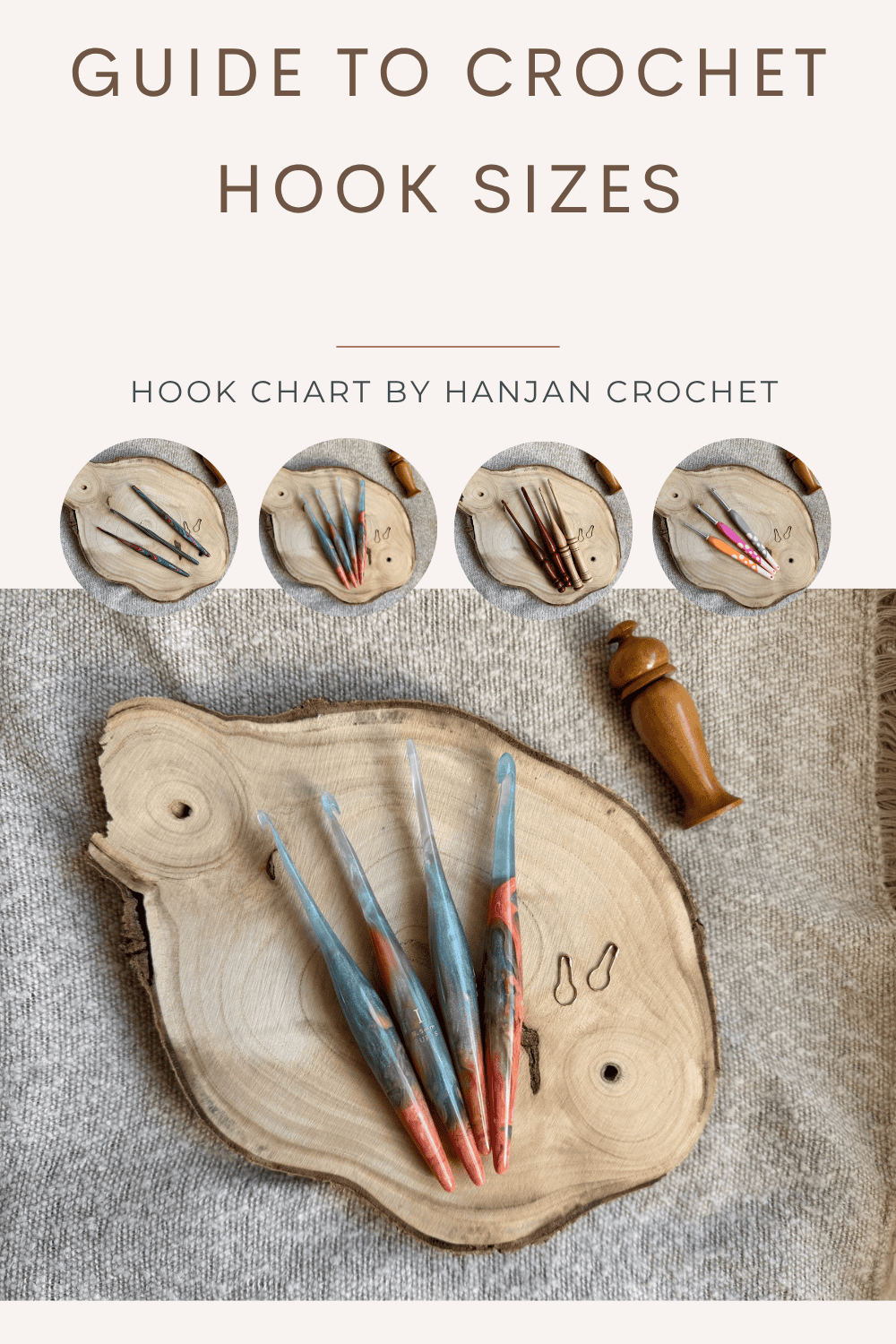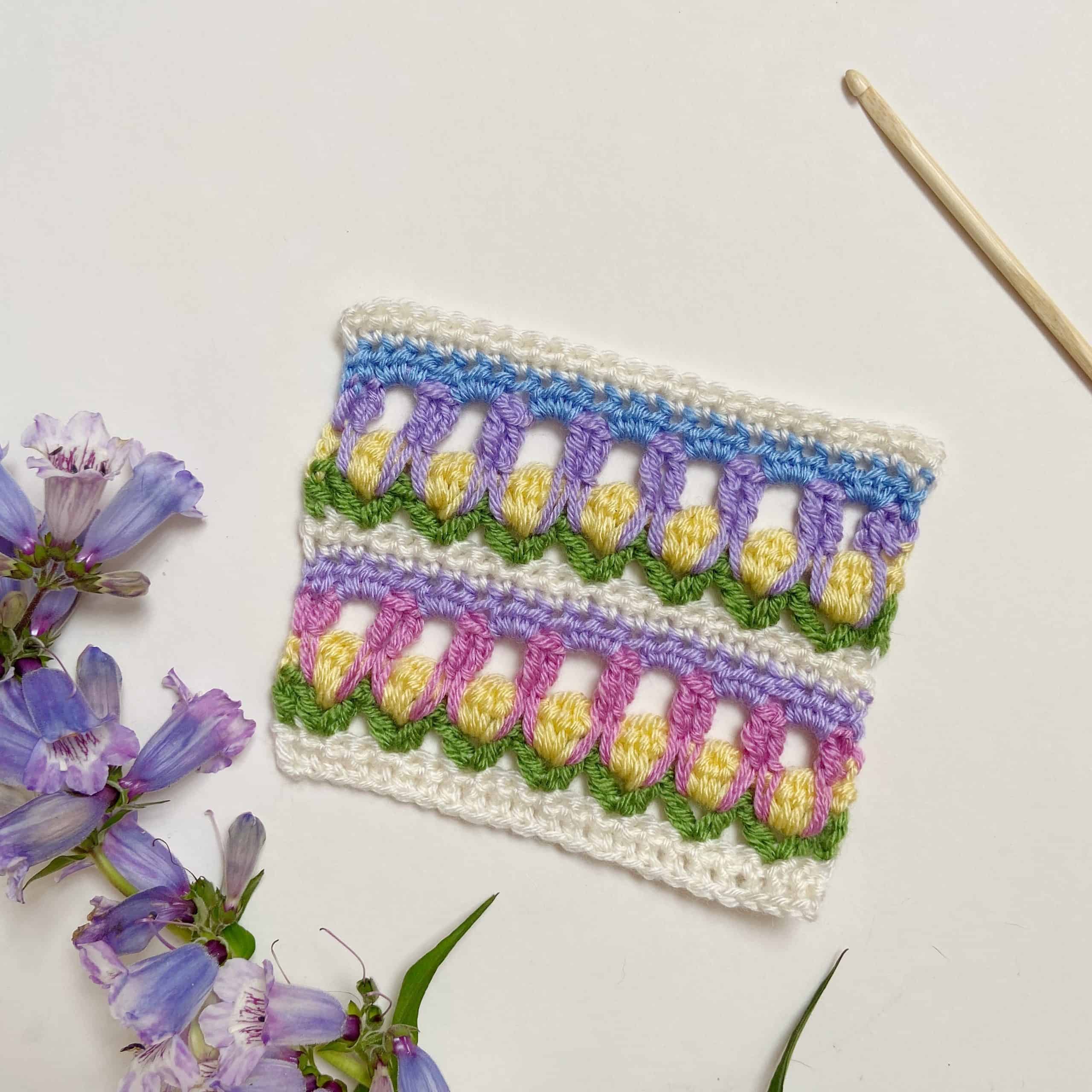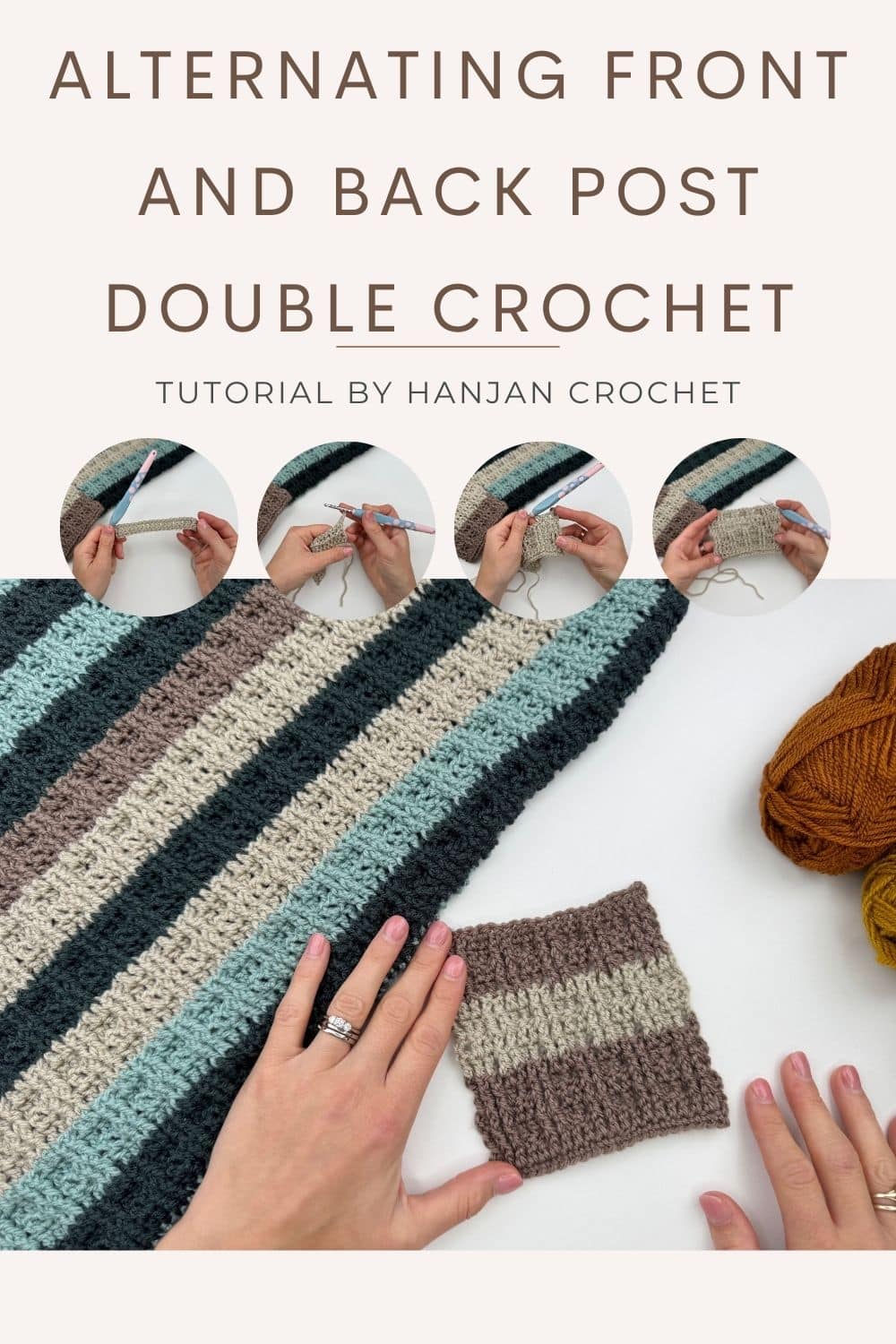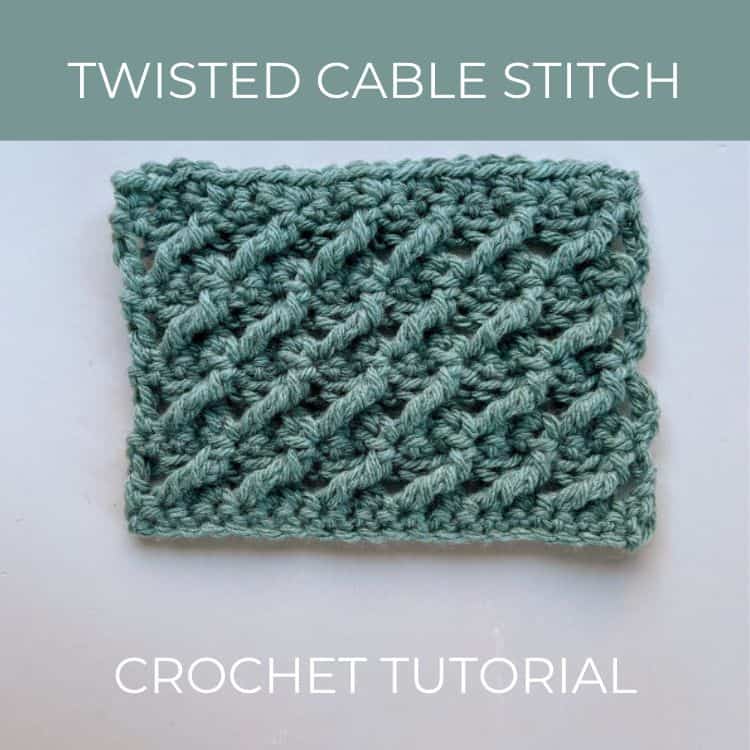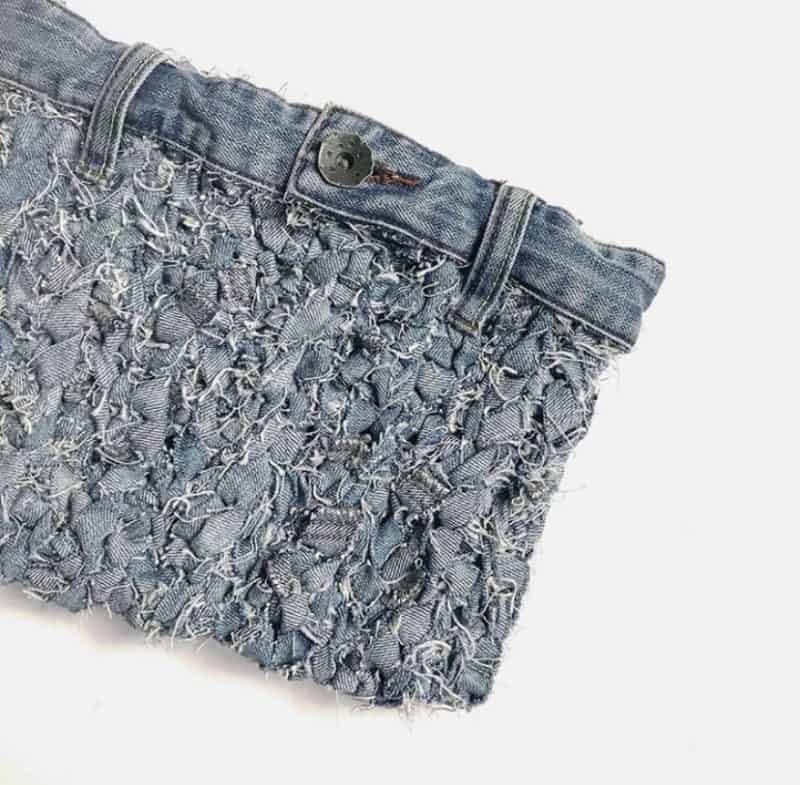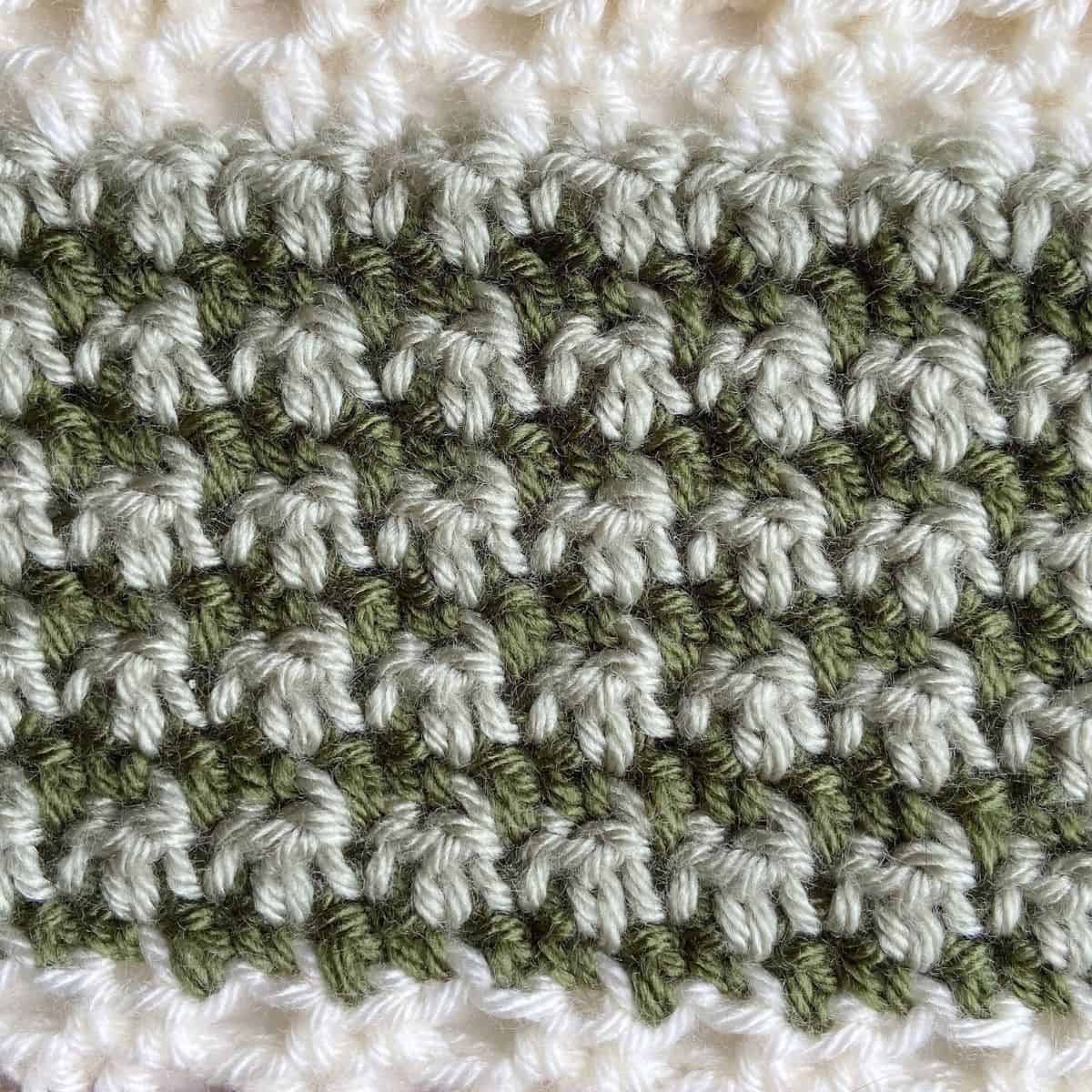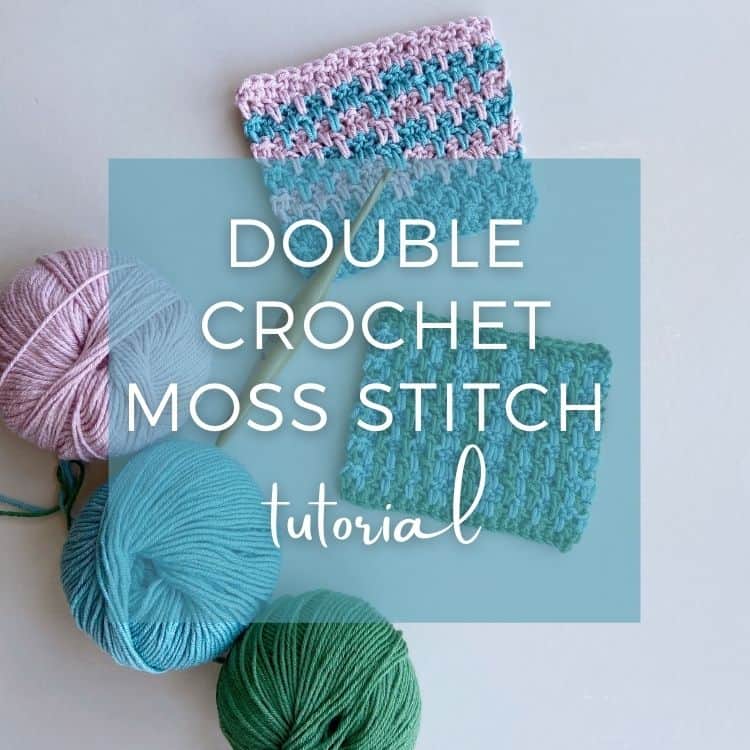This post may contain affiliate links. Please see my full disclosure and privacy policy for details.
Crochet hooks come in a huge array of sizes, materials and shapes, so choosing the right one can be a bit of a minefield. I’m here to help with this comprehensive guide to crochet hook sizes.
I’m going to go through all the different types of hooks that are available and which you should use for different yarn weights. I’ll also share with you a handy conversion chart to help you understand the different size systems used in the US and UK.
If you’re new to crochet, or even if you’ve been doing it for a while, this is going to be a really useful guide. Make sure to pin it, so you can refer back to it whenever you need.
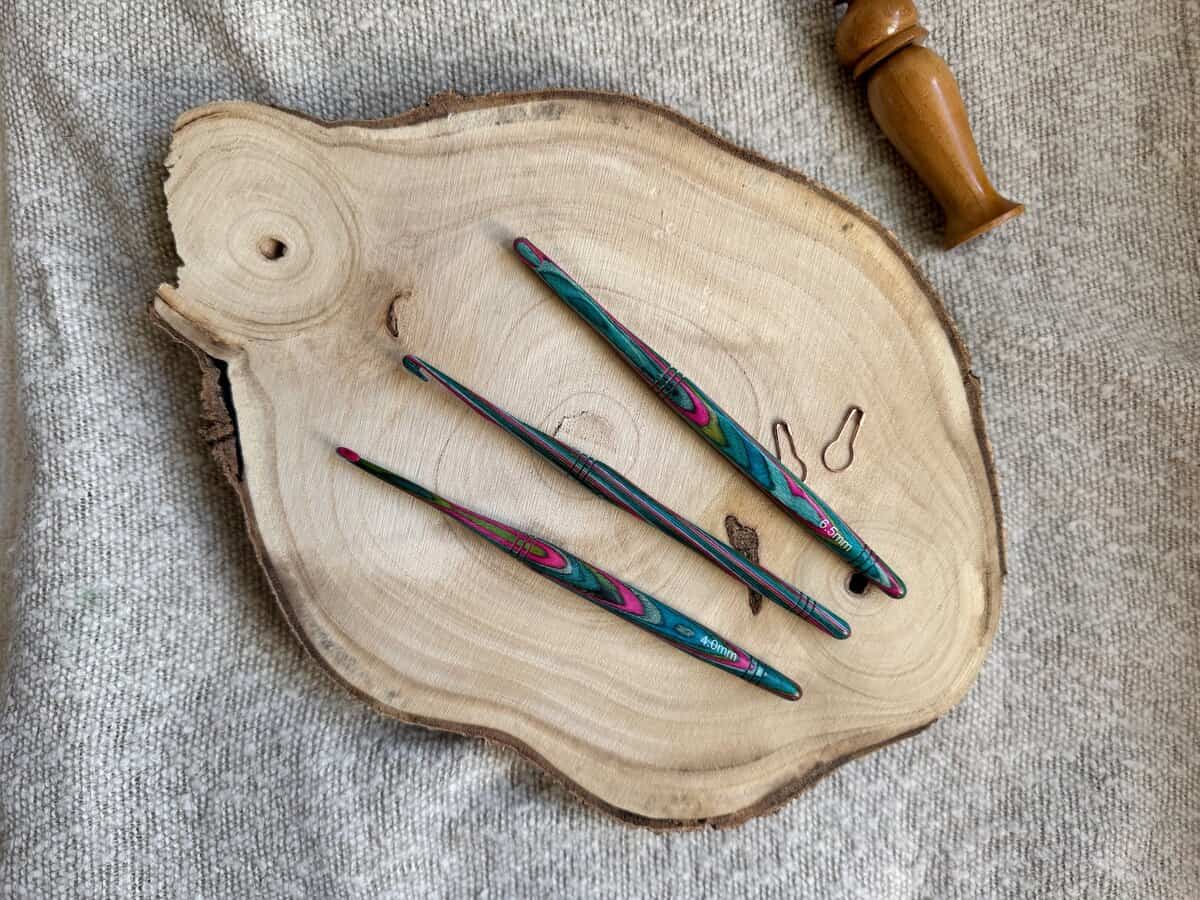
Table of Contents
What is a crochet hook?
A crochet hook is the tool that you use for crocheting. It is held in the hand and used to create stitches with yarn. It can be referred to as a crochet needle, but this isn’t very common.
Along with yarn, this is the essential item that you will need as you start out on your crochet journey. There are so many different types of hooks out there though, so we need to learn a bit more before we can decide which ones to buy.
Anatomy of a crochet hook
A crochet hook can be divided into different parts:
- Point – this is the end that you insert into the stitches of the crocheted fabric
- Throat – just below the point, this is where you are going to be wrapping your yarn around
- Shaft – the straight part of the hook, this determines the hook size
- Thumb grip – on most hooks, this is a flat section that helps you grip your hook. It often has the size written here
- Handle – the bottom part of the hook, where your hand goes to hold it
Inline vs. tapered crochet hooks
Crochet hooks can be divided into two broad groups: inline crochet hooks and tapered ones.
With an inline crochet hook, the point of the hook is in line with the shaft. It looks like a complete cylinder with just a notch cut out to create the point. They can also be called straight hooks for this reason. Inline hooks are good for creating really even sized stitches.
A tapered crochet hook has a narrower neck, and the point of the hook is either further forward or further back than the line of the shaft. The point of the hook also tends to be more rounded at the tip. Tapered hooks are good for yarns that tend to split easily.
Types of crochet hooks
There are lots of different types of crochet hooks and the ones you like best are largely down to personal preference. However, different types tend to be suitable for different projects and different yarns.
The material that a hook is made of can affect how you crochet and how comfortable you find holding it. Another thing you might want to bear in mind is the price, as this can vary widely. Let’s have a look at the different types of hooks available, starting with the 3 main materials hooks can be made from.
Metal crochet hooks
These are usually made from aluminium and are one of the cheapest type of hook available. They are generally straight with a small flat thumb grip section. A metal crochet hook is super smooth which means it will slide through stickier yarns like acrylic, and enable you to crochet fast.
Metal hooks are great for beginners just starting out, but can be tough on the hands. So for people with arthritis, they may not be suitable. Because they are metal, they are tough and long-lasting, although they can still get bent if you tread on them!
Wood or bamboo crochet hooks
Wooden and bamboo hooks can be really beautiful, like this Caspian Wood Hook Set. They are a great lightweight option, which is particularly useful when you want to use a larger hook. They are great for slippery yarns like silk, as they tend to have a bit more grip. Watch out for cheap, poorly made wooden hooks though, as they tend to snag the yarn.
Many people find wooden hooks a bit easier to work with than metal hooks. They are more flexible, which is easier on the hands. However, smaller wooden hooks can be quite liable to breaking.
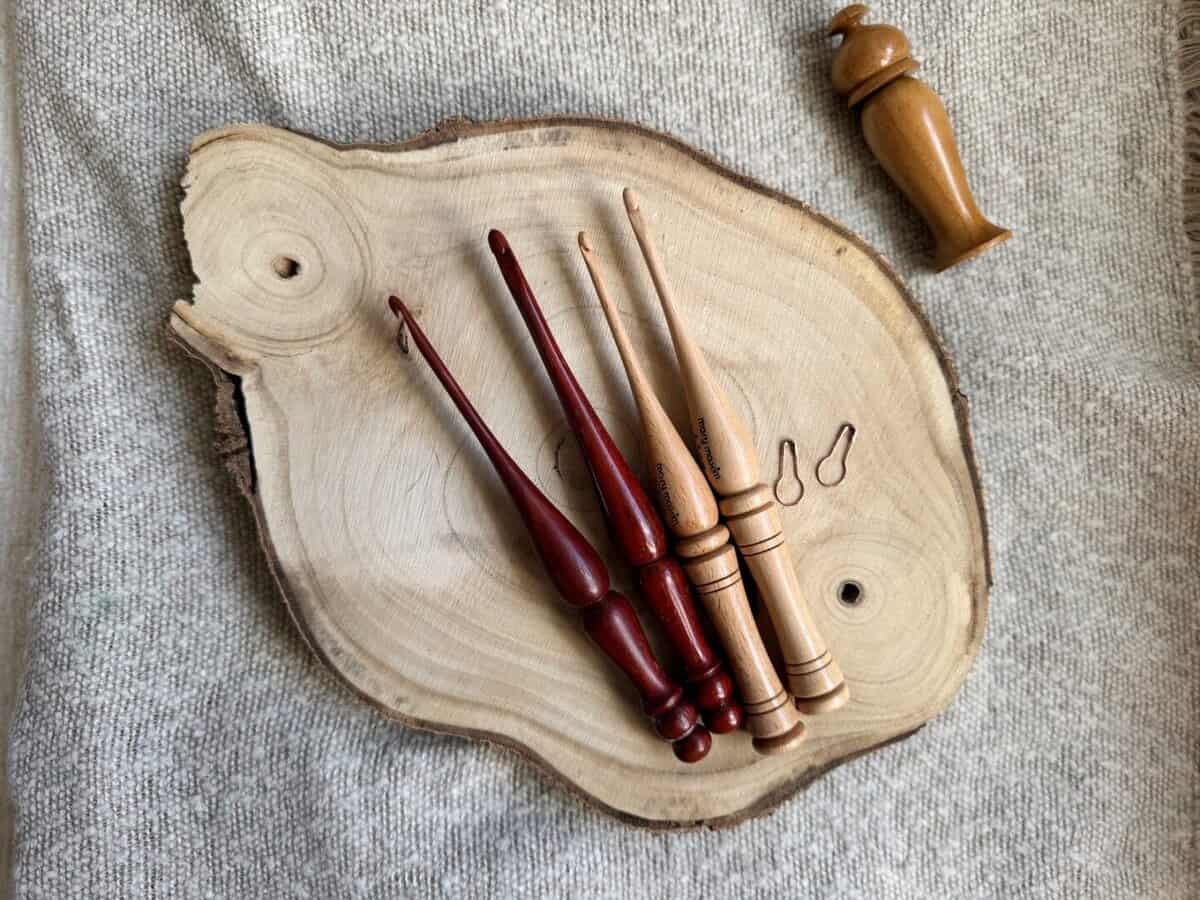
Plastic crochet hooks
Plastic hooks are also great for beginners. They are light and strong, and can be inexpensive. There are a few different types of plastic used for hooks these days, such as acrylic, resin and recycled plastics. I’ve even seen hooks made with a 3D printer. If you’re looking for some really beautiful plastic hooks, try these resin Furls hooks.
Plastic hooks often have a larger moulded handle, which can be more comfortable to hold. This brings me onto ergonomic crochet hooks.
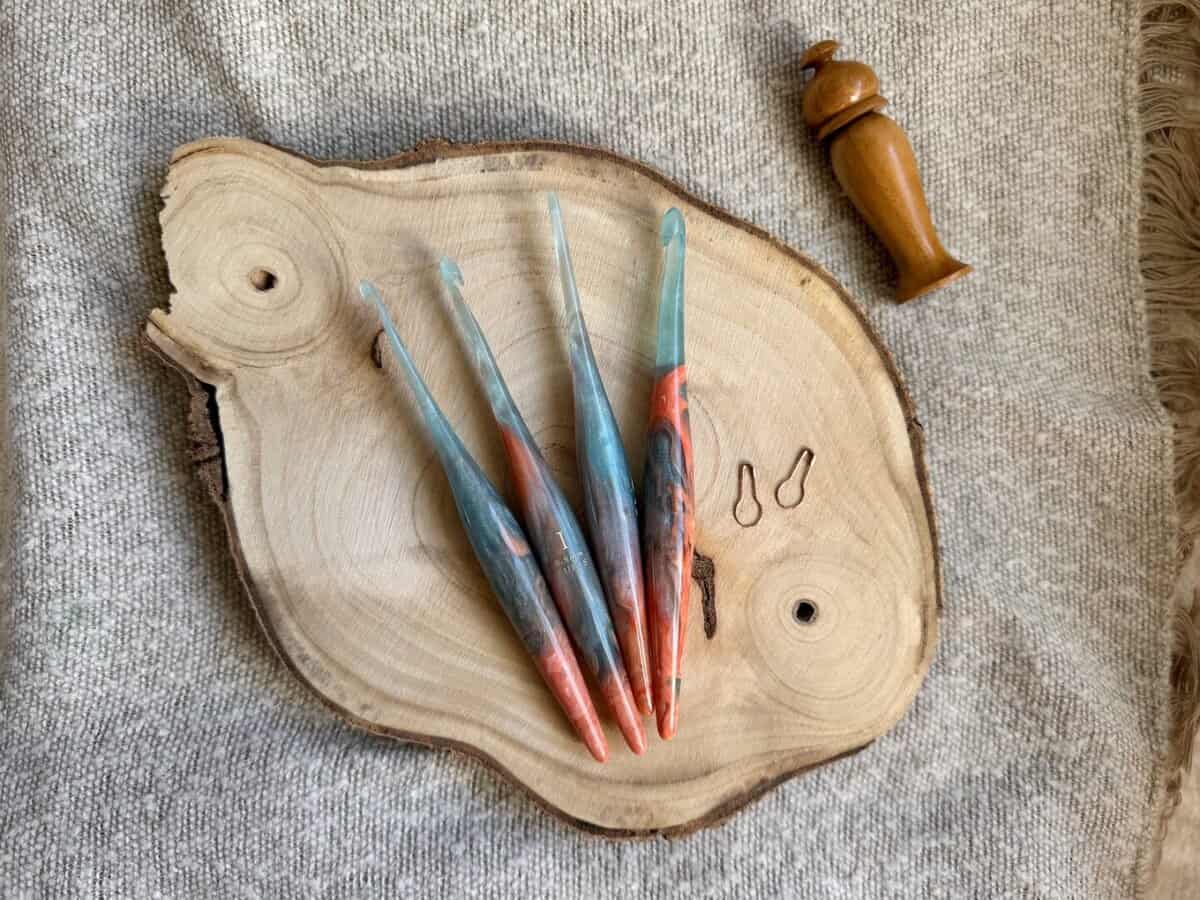
Ergonomic crochet hooks
Ergonomic crochet hooks have been designed to be comfortable to hold and crochet with for long periods of time. They often have a larger, shaped handle, which reduces strain on the hand and wrist.
Ergonomic hooks are often metal on the point and shaft, with plastic for the handle, like these Dots hooks. There are some lovely handmade ones available too.
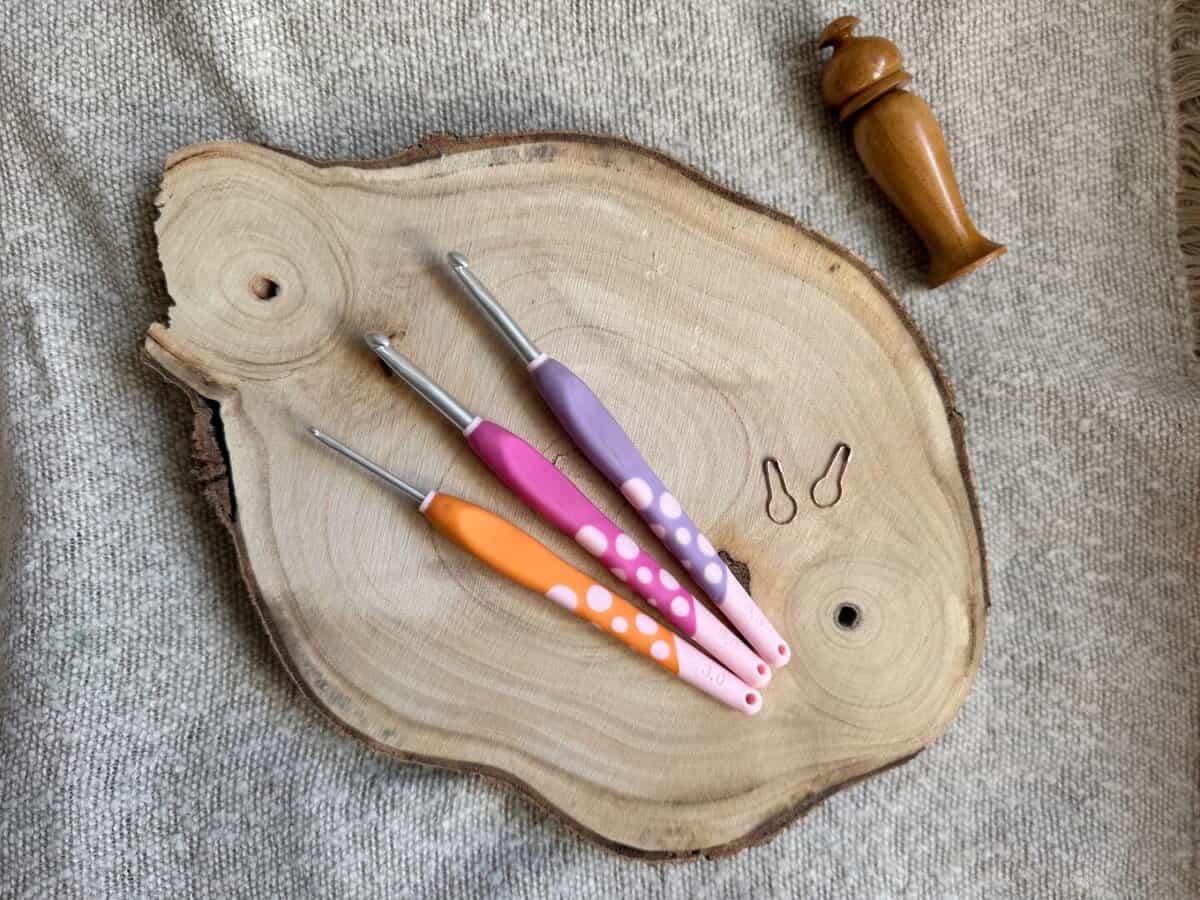
Steel (or micro) crochet hooks
Unlike the hooks I have discussed above, steel, or micro crochet hooks are not used for regular crochet, and are not available in the same sizes either.
Steel crochet hooks are used for micro crochet, or crocheting with very fine, lace weight yarn or embroidery thread. They come in very small sizes and have their own size chart to go with it.
Tunisian crochet hooks
Tunisian crochet hooks are another type of hook entirely, but I just wanted to mention them here briefly. They are used for Tunisian or Afghan crochet, which is a sort of cross between crochet and knitting.
Tunisian crochet hooks are longer than regular hooks, and often have a stopper or a flexible wire on the end. This is because Tunisian crochet is worked by creating a large number of loops on the hook, and so a longer shaft is needed to accommodate them. This is a lovely Tunisian crochet hook set if you are looking for one.
What are all the sizes of crochet hooks?
As you have probably realised by now, there are quite a lot of different sizes of crochet hooks. We need to make sure that we pick a hook that works with the yarn we want to use.
If we are using a thin, fine weight yarn, we will want to use a thin hook with it. This is because a large hook will make the spaces between the stitches and the stitches themselves too big in comparison to the yarn.
Conversely, for a thick chunky weight yarn, we want to use a larger hook size. Using a small hook with a chunky yarn will make a very tight, stiff fabric and it will be very hard to work with.
Unfortunately there is not just one system of categorising crochet hooks. We have already seen that steel hooks have their own set of sizes. Now let’s look at the regular hook sizes.
Crochet hook sizes in mm
The easiest and probably most common way of determining the size of a crochet hook is in millimetres (mm). This is the measurement of the diameter of the shaft. Hooks come in a range of sizes from around 2mm up to 20mm.
Oftentimes this diameter is written on the thumb grip of the hook itself and this is the easiest way of finding out what size hook you have. In patterns, the hook size is usually given in mm, along with one of the other hook sizing systems.
US vs UK crochet hook sizes
You may also see a different system of sizing written on your crochet hook, particularly if it is an older hook.
In the US, hook sizes are written as a letter and a number (and sometimes just a number), so for example a 4mm hook is a G/6.
The UK has an older system that you will still find on some hooks and these are given as numbers. A 4mm hook in the old UK system is an 8.
Luckily, most hooks now include the metric mm size on the hook, even if they also use one of the other sizing systems.
The conversion chart below will help you convert from one to another.
To unlock Exclusive Content on the HanJan Crochet Blog, all you need to do is click the box below and the Grow.me app will pop up, allowing you to enter your email and create a password.
Once you’ve created an account, every time you see Exclusive Content on my blog (or any others that use Grow), simply login to your Grow account. Be sure to switch to the login screen to enter your login credentials.
If you forget your password, click the “forgot password” link and follow the prompts. Please note that I’m unable to assist with resetting Grow passwords or accessing your Grow account, so be sure to save your login information in a safe place.
Thank you for subscribing and for joining me at HanJan Crochet! I hope you enjoy the exclusive content available on the site and I can’t wait to see what you create 🙂
What size should I use as a beginner?
As a beginner, choosing a crochet hook can be totally overwhelming. So it’s best to use the hook recommended by the pattern or the ball band of your yarn.
If you are just having a go, following a beginner stitch tutorial, then I would recommend using a worsted weight yarn with a 5mm hook, or a bulky yarn with a 6mm hook. These sizes are big enough that you will be able to see your stitches, but not too big that they become unwieldy.
I would definitely recommend steering clear of the really fine steel crochet hooks, as they require quite a lot of experience to see the tiny stitches.
As a beginner, you probably won’t have all of the sizes of hooks available to you, so just use what you have. Or check out your local charity shop and see if you can pick up a cheap hook to get started with.
Crochet hook sizes and yarn weight
Choosing the correct hook for the yarn you are using can be tricky, but it is fairly important and will help you create a lovely crocheted fabric. You will want to follow your pattern’s recommendations, as many designers switch things up to create beautiful effects, but here is a general guide.
Crochet hooks for lace weight yarn
Lace weight is the finest weight of yarn and will therefore require very fine crochet hooks. These are the steel or micro hooks that we have mentioned before. They come in sizes from 3.5mm all the way down to 0.25mm, but for lace weight yarn, I would recommend anything below 2mm. You’ll probably want to get a hook with a good grip to help you work into those tiny stitches.
Crochet hooks for super fine and fine weight yarn
For these yarn weights, I would recommend a hook size of between 2.5mm and 4mm depending on what you are making. Often, these weights of yarn are used for loose and lacy summer garments, and for this using a slightly larger hook size might work well. You can try it out and see how the fabric drapes.
Crochet hooks for light / DK weight yarn
Dk yarn is one of the most common weights of yarn, and it is usually used with a 4mm hook. It would work fine with a 3.5mm or 4.5mm too, depending on how tightly or loosely you crochet and what you are making.
Crochet hooks for worsted weight yarn
One size up from DK, this is another all-rounder yarn. For this, you would want to use a 5-6mm hook. Invest in something comfortable as you will often find yourself making larger blankets and winter garments with this size hook.
Crochet hooks for bulky yarn and bigger
As you get to the thicker weight yarns, you will also want to be using some of the bigger hook sizes. You can use a 6-7mm hook for a bulky yarn, but once you get to super bulky, you’re going to be looking at 9mm and larger. When you use larger hooks, I would steer away from metal, as they can be very heavy in the larger sizes.
How do I pick the correct crochet hook size?
There are a few easy ways to ensure you pick the correct hook size for the project you want to work on. Failing that, you can use the general advice given above and start from there.
Pattern
The easiest way to know what hook size to use is to use the hook recommended in the pattern. The designer will have tech edited and tested their pattern to ensure the chosen hook goes well with the chosen yarn to create the design shown.
Yarn label
The ball band around your yarn usually tells you what weight the yarn is and what crochet hook you should use with it. It often also states the gauge, which you can use to find out if you are using the correct hook size.
Gauge swatch
A gauge swatch can help you to determine the correct hook size. You make a sample of crochet using your selected yarn, following the gauge instructions on your pattern and measure it. If the sample is bigger than you want it to be for the number of stitches, then you should try again with a smaller hook size. If the sample is smaller, try a larger hook size.
This is also a good opportunity to see if the selected yarn and hook combination produce a nice crocheted fabric, with good drape, which is fit for the intended purpose.
How to determine the size of a hook
Usually your hook will say what size it is on the thumb grip. If it’s not in the sizing system you prefer, you can use the conversion chart above. But there are occasions, where there’s no size mentioned, or it’s rubbed off over time.
So what do you do then?
Hook measuring gauge tool
A hook gauge tool is a really handy item you can get that will help to determine what size your hook is. It has a series of different holes in that you can put your hook in to work out which one fits, and that is the size of your hook.
These tools usually also double as a measure for gauge swatches too.
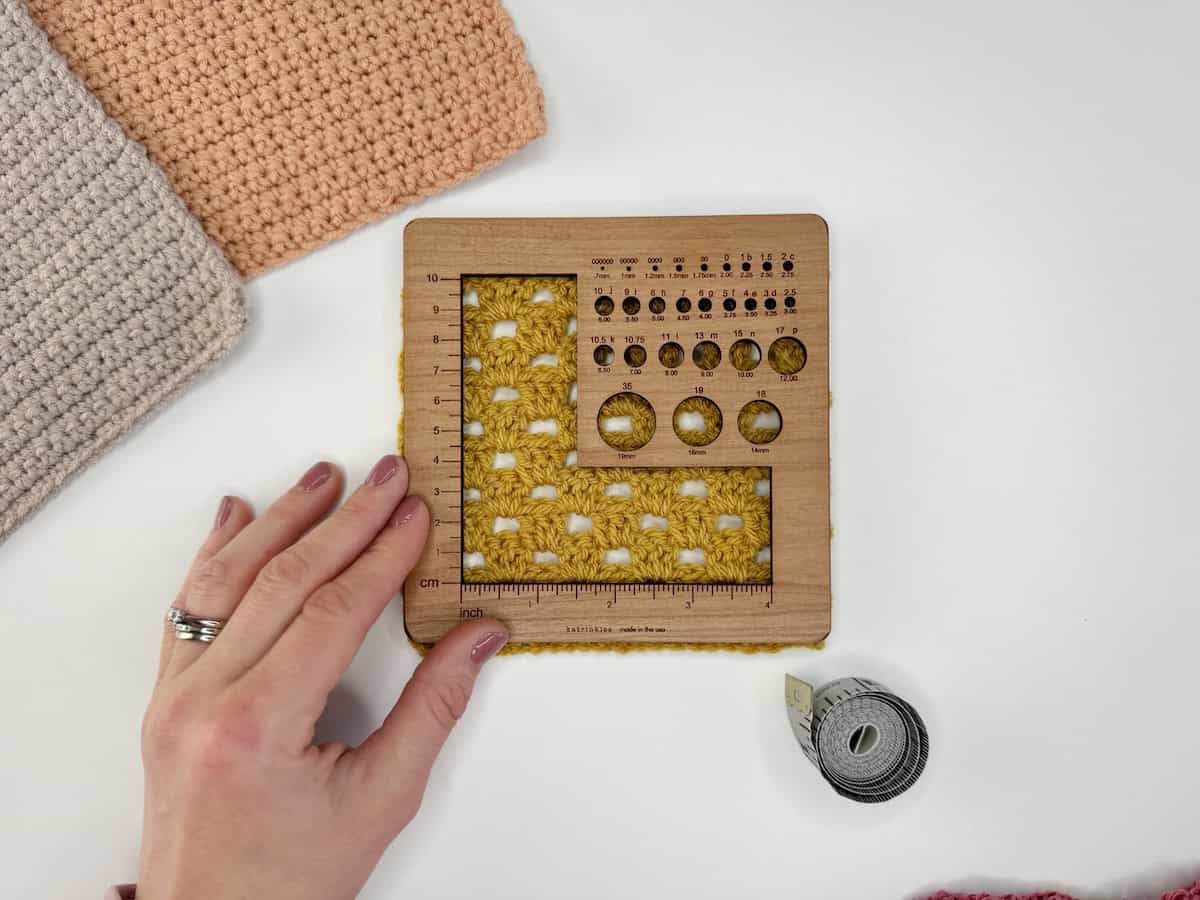
Measure the hook diameter
Another way to work out your hook size is to measure the diameter of the shaft. To do this accurately, you’re going to need a caliper, which is a special tool for measuring diameter. You may have one in the garage! Using this, it’s easy to find out what size your hook is.
What should I do now I’ve learnt all about crochet hook sizes?
Now that you’ve learnt all about the different types of crochet hooks, I imagine you’d like to get started with some actual crocheting!
If you are a beginner, please go and check out my beginner crochet guides for more great advice and inspiration. You are going to want to start by learning how to make a slip knot, followed by a crochet chain stitch.
Patterns for different crochet hook sizes
If you’re itching to get crocheting, here are a few patterns in different yarn weights, which use different sized crochet hooks, that you might like to have a go at. Note that not all of them follow the general rules outlined above!
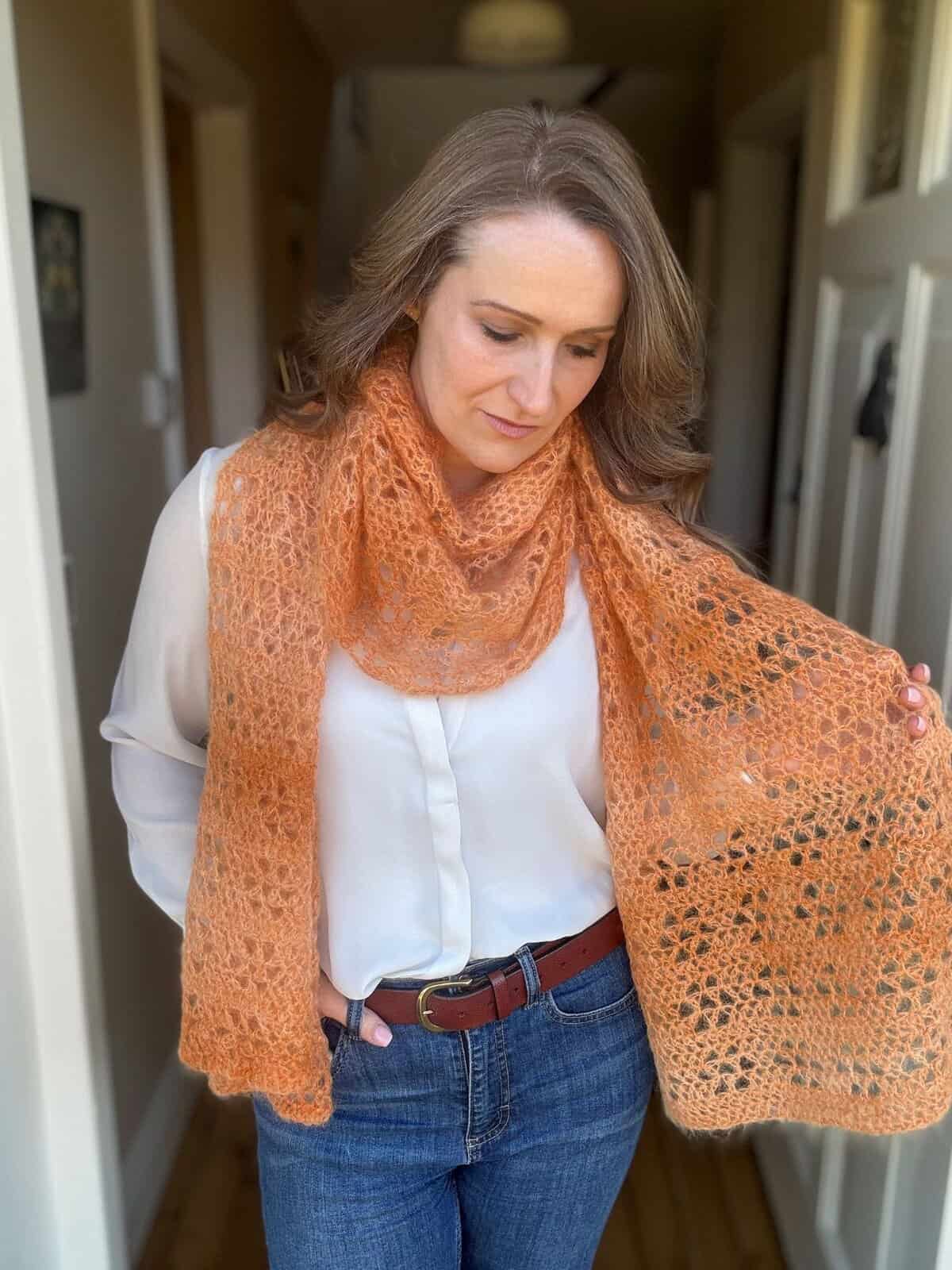
Lace weight and a 6.5mm crochet hook: this elegant scarf is beautifully delicate, perfect for dressing up any outfit. It’s made with a larger hook to create this open, lacy effect.
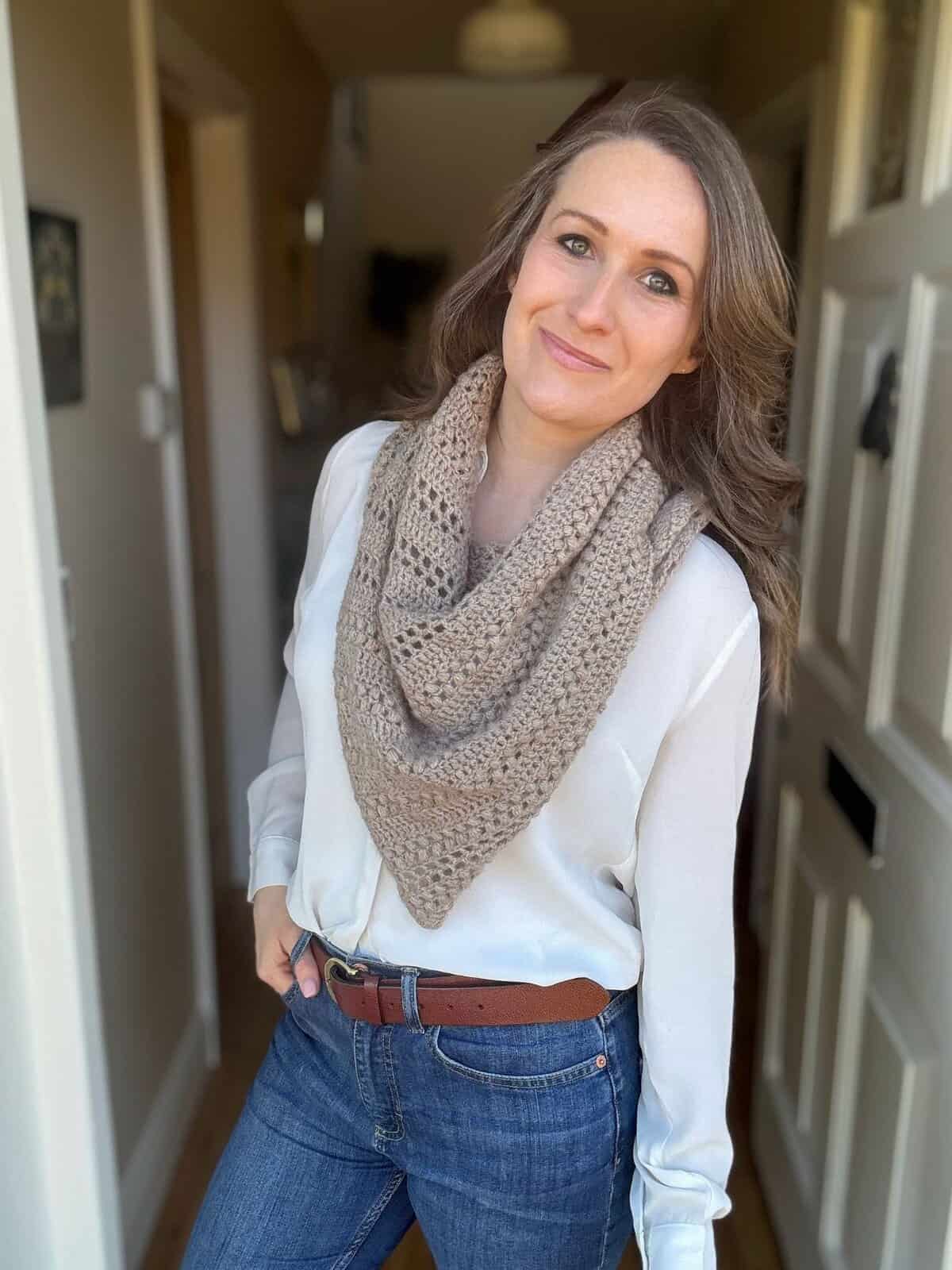
Superfine weight and a 5mm crochet hook: The Richmond Shawl is a delicate and sophisticated crochet boomerang shawl pattern that is perfect for layering.
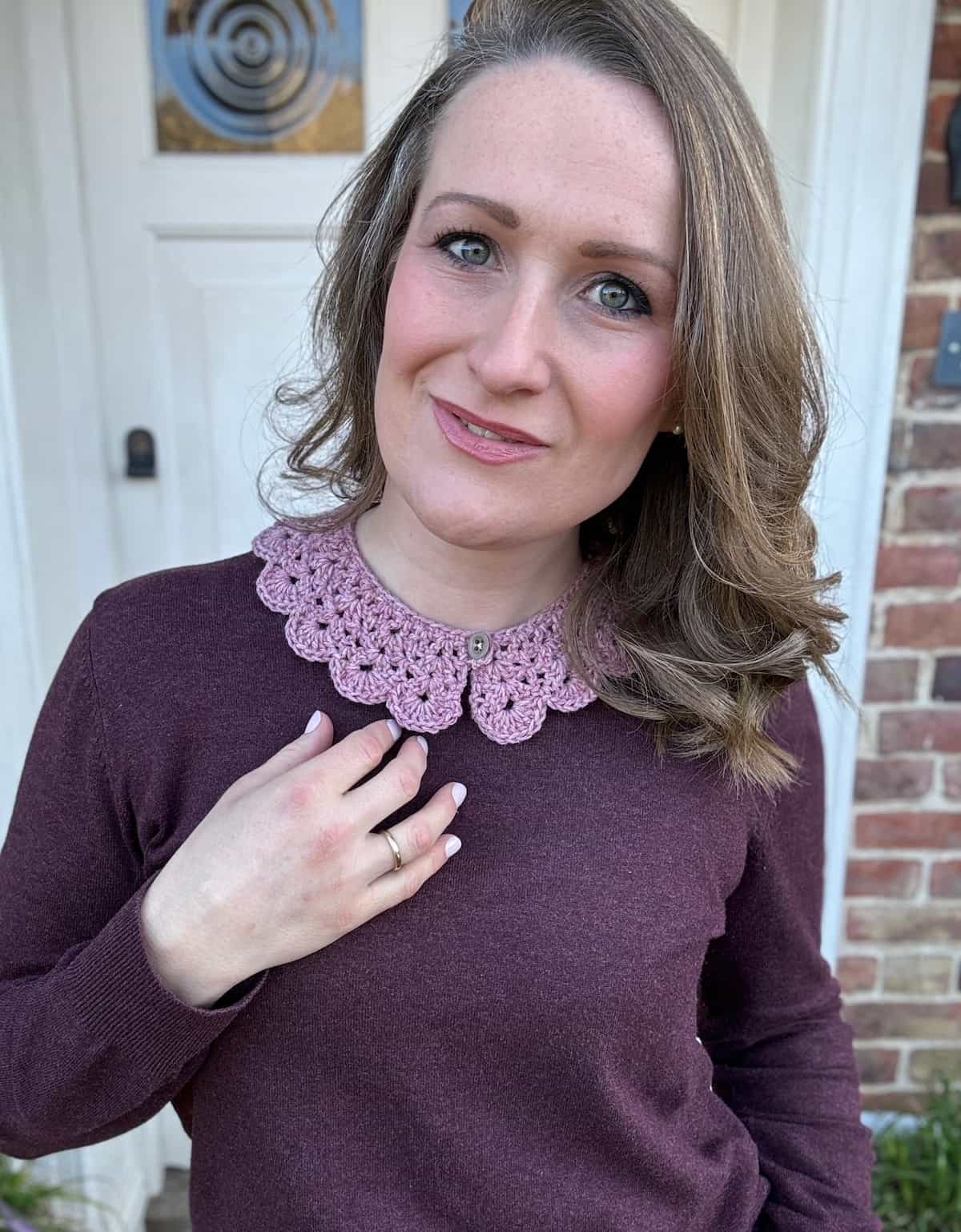
Fine weight and a 4mm crochet hook: Make this beautiful crochet collar to add a statement to any outfit.
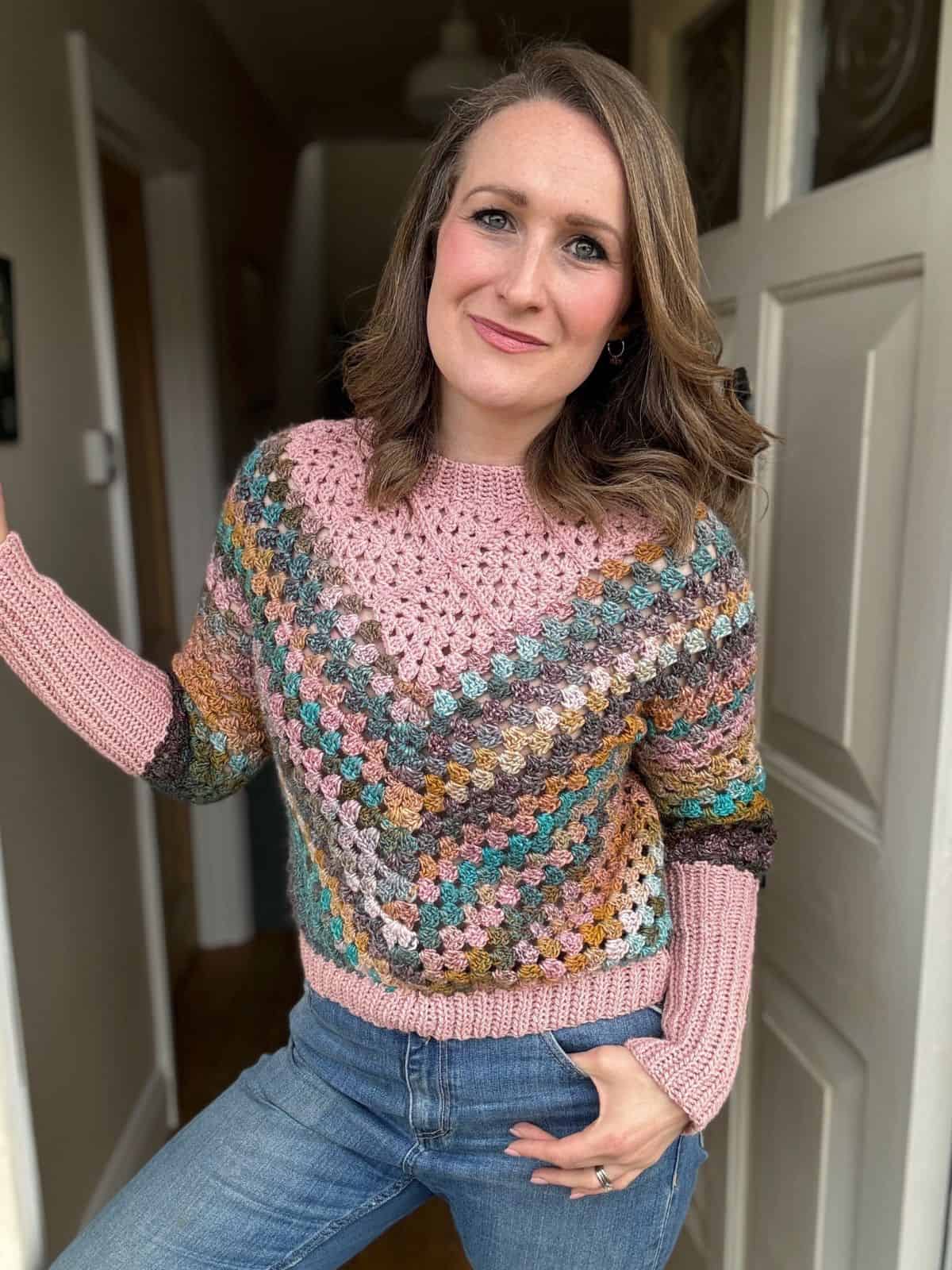
Light weight and a 4.5mm crochet hook: The Granny Square Crochet Sweater is a modern and fun twist on the traditional granny square.
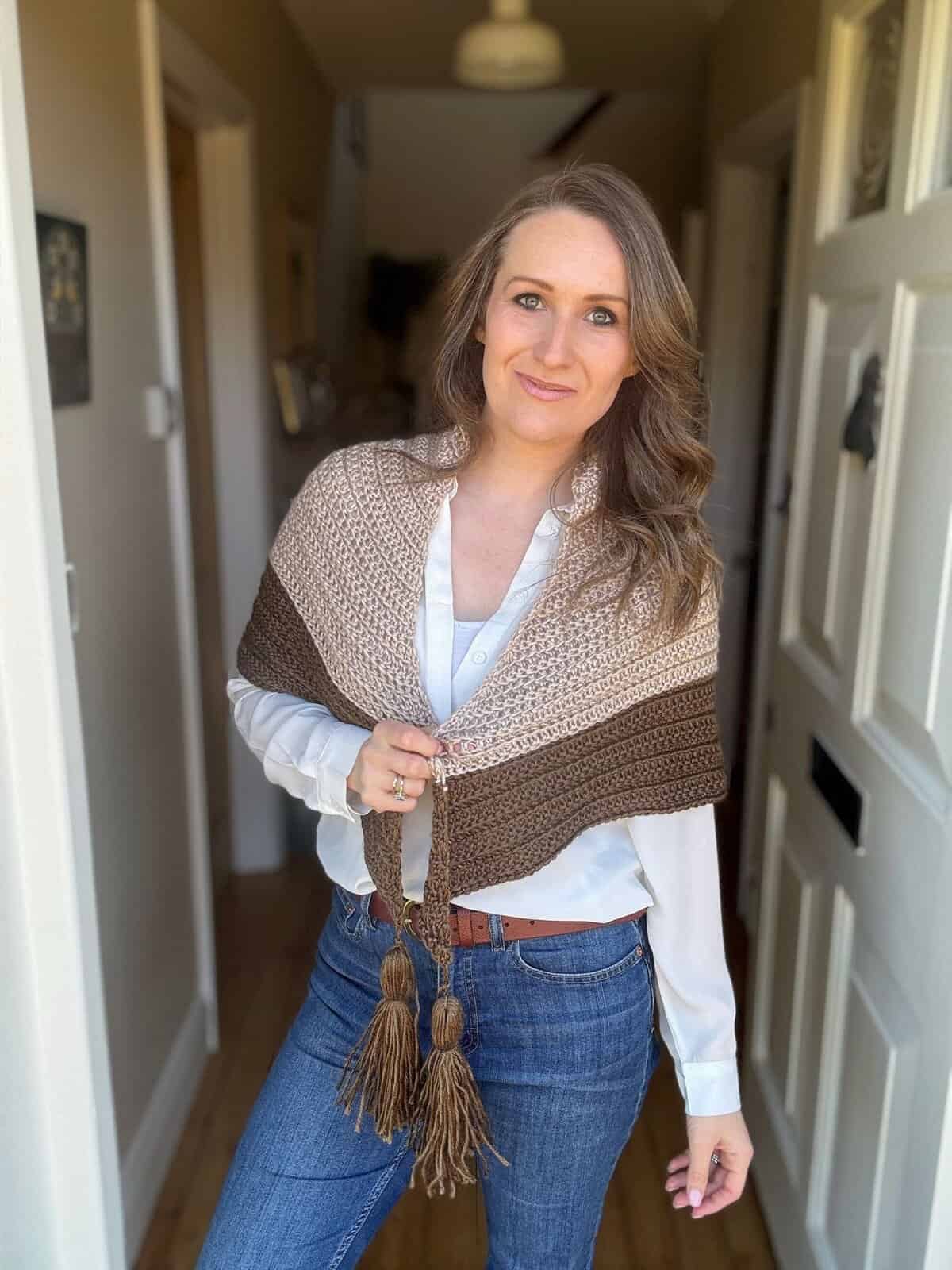
Medium weight and a 5.5mm crochet hook: This easy triangle shawl is a perfect beginner pattern using simple stitches to create a cosy shawl.
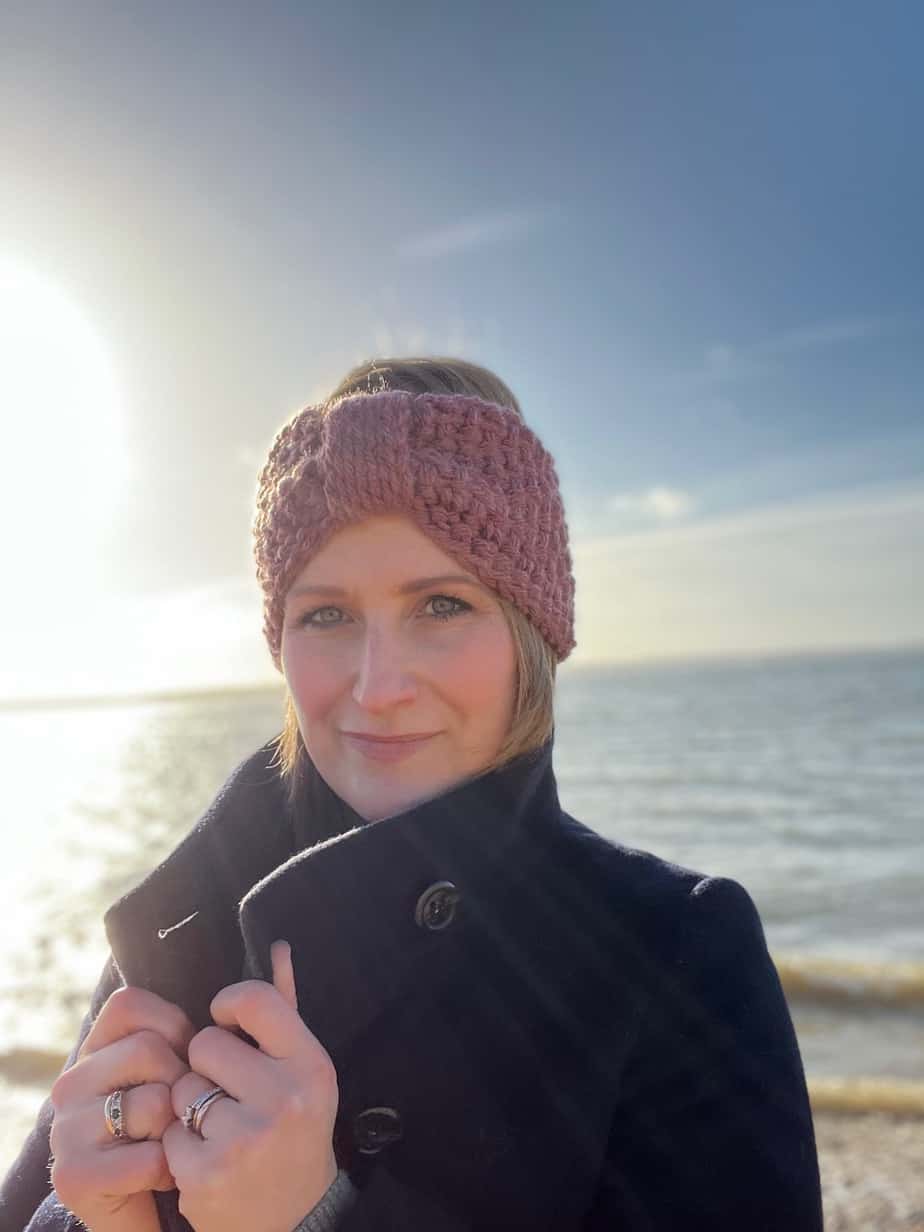
Bulky weight and a 9mm crochet hook: This modern textured crochet headband is quick and easy to whip up.

Super Bulky weight and a 20mm crochet hook: Have a go at a super bulky throw pattern for a quick, but cosy make.
I hope you’ve enjoyed learning all about crochet hook sizes with me!
I’d love to know what you think and if you made any of the projects in the different weight yarns! You can sign up to become a member of HanJan Crochet and I’ll let you know about all the fabulous crochet adventures, offers, lives and more too!
See you there!
Learn Some More Crochet Stitches With Me
If, like me, you’re eager to learn all the crochet stitches and techniques you possibly can then I’d love you to take a look at my crochet stitch tutorials – here are some of my favourites from my beginner series:
- how to make a slip knot – this is the first thing you need to be able to do, as this is what secures the yarn to your hook.
- how to crochet a chain stitch – chain stitches are used as a foundation for all subsequent rows to be built on top of.
- the single crochet stitch tutorial – this stitch is used in so many patterns in lots of different ways, so is fundamental to master.
- how to half double crochet stitch – the half double crochet is taller than the single crochet and creates a beautiful texture.
- how to do a double crochet stitch – taller again, the double crochet is used in so many different crochet techniques and patterns.
- how to crochet a slip stitch – this is the smallest stitch, used for things like joins and moving across a row
- front post and back post double crochet – these are a variation on the double crochet stitch, which is used to create texture, ribbing and cables.
